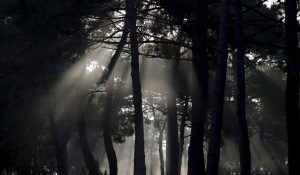Katarniaghat Wildlife Sanctuary:

A 55-year-old farmer was mauled to death by a leopard in a field adjoining a forest area under the Kakraha Range of the Katarniaghat Wildlife Sanctuary recently.
- Katarniaghat Wildlife Sanctuary is situated in the Upper Gangetic plain, falling in the Terai of the Bahraich district of Uttar Pradesh.
- In 1987, it was brought under the purview of the ‘Project Tiger’, and together with the Kishanpur Wildlife Sanctuary and the Dudhwa National Park, it forms the Dudhwa Tiger Reserve.
- The total area of the sanctuary is 400.09 sq.km.
- Sharing an international border with Nepal, this sanctuary was established to protect its Gharial (Gavialis gangeticus) population.
- It provides strategic connectivity between the tiger habitats of Dudhwa and Kishanpur in India and the Bardia National Park in Nepal.
- Katarniyaghat’s vegetation consists of grasslands, mixed deciduous forests, and moist deciduous forests with sal trees.
- It is predominantly Sal Forest with its associate tree species like Terminalia alata (Asna), Lagerstroemia parviflora (Asidha), Adina cordifonia (Haldu), Mitragyna parpiflora (Faldu), Gamelina arborea (Gahmhar), etc.
- It is home to a number of endangered species, including the gharial, tiger, rhino, Gangetic dolphin, Swamp deer, Hispid hare, Bengal florican, the White-backed and Long-billed vultures.
- The Gairwa River, which flows in the KWS area, is declared a sanctuary for Mugger and Gharial. It is also home to rare turtles, freshwater fish, and a host of aquatic life.
- It is among the few places in India where freshwater dolphins, also known as Gangetic dolphins, are found in their natural habitat.




